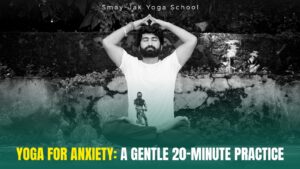Yoga, an ancient practice rooted in Indian traditions, has many branches and approaches. Among these, Hatha Yoga and Patanjali’s Yoga Sutras are two of the most prominent paths. While both emphasize the importance of pranayama, or breath control, they approach it differently. Understanding these differences can deepen one’s practice and appreciation for the rich tapestry of yoga.
Hatha Yoga: A Physical Approach
Hatha Yoga, often considered the physical branch of yoga, places significant emphasis on the body. The term “Hath” itself means “forceful” in Sanskrit, reflecting the intense physical discipline involved. This approach to yoga includes asanas (postures), pranayama (breathing techniques), mudras (hand gestures), and bandhas (energy locks).
In Hatha Yoga, pranayama is practiced with the aim of purifying the body and preparing it for higher states of consciousness. The emphasis is on the physical manipulation of the breath to control the prana (life force) within the body. Key practices include:
- Nadi Shodhana (Alternate Nostril Breathing): Aims to purify the nadis (energy channels) and balance the body’s energy.
- Kapalabhati (Skull Shining Breath): Focuses on forceful exhalation to cleanse the respiratory system and energize the body.
- Bhastrika (Bellows Breath): Involves rapid and forceful breathing to increase energy and stimulate the metabolic processes.
The primary goal in Hatha Yoga pranayama is to create a stable and healthy body capable of sustaining prolonged meditation and deeper spiritual practices.
Patanjali’s Approach: A Spiritual Framework
Patanjali, the sage credited with compiling the Yoga Sutras, presents a more philosophical and systematic approach to yoga. His framework is often referred to as Raja Yoga or Ashtanga Yoga, which means the “eight-limbed” path. This path outlines a comprehensive guide to spiritual development, with pranayama being the fourth limb.
In Patanjali’s approach, pranayama is more than a physical practice; it is a bridge between the external and internal practices of yoga. The key elements include:
- Regulation of Breath: Pranayama in the Yoga Sutras involves controlling the duration, frequency, and depth of breath. This regulation aims to calm the mind and prepare it for meditation.
- Pratyahara (Withdrawal of Senses): Pranayama aids in pratyahara, helping practitioners withdraw their senses from external distractions and focus inward.
- Dhyana (Meditation) and Samadhi (Absorption): Ultimately, pranayama supports the practitioner in achieving higher states of meditation and, eventually, samadhi, the state of pure consciousness.
Patanjali views pranayama as a tool for mental purification and control, emphasizing the subtle effects of breath on the mind and consciousness. The practice is less about the physical manipulation of breath and more about its role in quieting the mind and preparing for deeper spiritual insights.
Key Differences Summarized
- Focus and Intent:
- Hatha Yoga: Emphasizes physical purification and preparation for meditation.
- Patanjali’s Approach: Focuses on mental purification and control, serving as a precursor to meditation and higher states of consciousness.
- Techniques:
- Hatha Yoga: Involves specific and often vigorous breathing techniques to cleanse and energize the body.
- Patanjali’s Approach: Involves gentle regulation of breath to calm the mind and facilitate inward focus.
- Outcome:
- Hatha Yoga: Aims for a healthy, strong body capable of sustaining spiritual practices.
- Patanjali’s Approach: Aims for mental clarity and the achievement of meditative states leading to samadhi.
Conclusion
Both Hatha Yoga and Patanjali’s approach to pranayama offer valuable insights and benefits to practitioners. Understanding their differences allows one to choose practices that align with their personal goals, whether they are seeking physical vitality, mental clarity, or spiritual enlightenment. Integrating these approaches can provide a holistic experience, balancing the body and mind, and paving the way for a deeper connection with the self.











